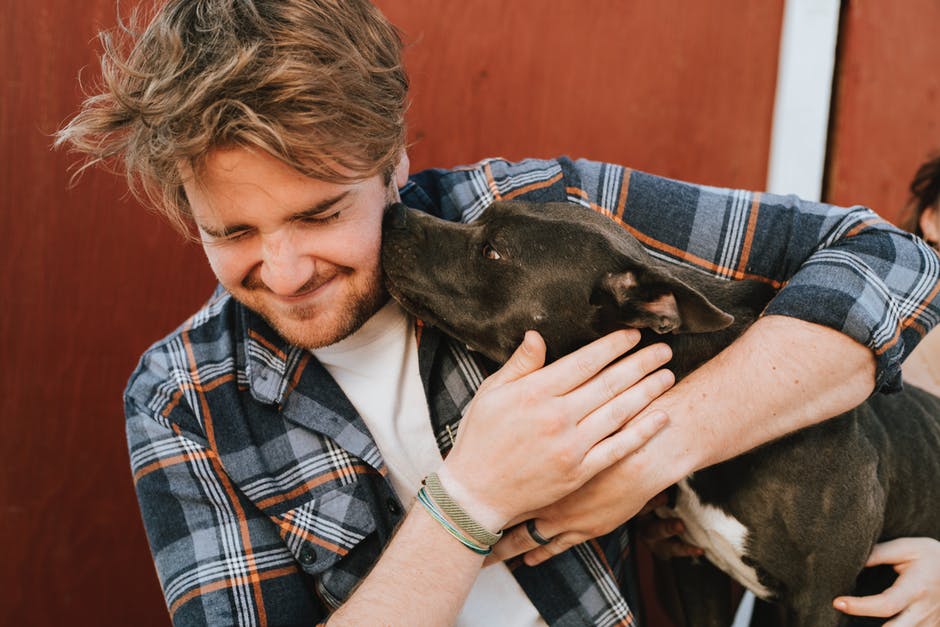Guest Post by: Julie Adams – Editor In Chief, Modern Living 101

The prospect of adopting your first dog is incredibly exciting. Regardless of if you’re considering taking home an older dog, or a puppy, you’re in for an adventure. If you treat a dog well, they will be with you through thick and thin no matter what. With a new dog, there is a lot to be excited about! But there’s also a lot you need to know sooner rather than later.
First off, thank you for doing research before simply diving into dog ownership. Many people skip this part and end up becoming overwhelmed, irresponsible pet parents.
Owning a dog is a long-term commitment that comes with more responsibility than most people realize. This little animal now depends on you to be the sole provider of care, nutrition, entertainment, and love for the rest of its life. Although there’s a lot of work that goes into your potential new role as a pet parent, the advantages will far outweigh any possible drawbacks.
Here are a few basics you need to know about dog ownership.
1. Look at food costs, and how much you’ll need to feed your dog
Not all dog food is created equal, and not all dogs are grazers. In fact, many of them are gluttons. They will eat everything you give them. Many people make the easy mistake of not paying attention to how much you’re feeding your dog or just eyeballing what you feel looks right. This can lead to overfeeding or underfeeding your dog.
To guarantee that you’re feeding your pet the proper quantity each day, do a little bit of research online. You can look at things like the type of food you’re giving your dog, how old they are, how much they currently weigh, and what a healthy weight range should be. This way, you’ll be able to accurately gauge where your dog falls in terms of weight standards and feed accordingly.
2. Be ready to potty train ASAP
Although it might be tempting to get a bit lax in your potty training schedule as your new pet dog gets familiarized with your house, it is necessary that you put together a potty training regime and stick to it– particularly in the developmental phases of your dog’s relationship with you and your home.
If you have not potty trained a pet previously, you’ll want to do some research into this as well. There are plenty of techniques for making the process easier. You can also learn what warning signs to look for to indicate your dog may have to go outside. If you tackle this challenge sooner rather than later, you’ll save yourself on cleaning and headaches in the future.
3. If you’re not prepared to clean, don’t adopt a heavy shedding breed
Unless you have a hairless dog, you can expect to have a new chore on your hands, regular vacuuming sessions to help control pet hair. With some breeds, you may even need to buy a certain vacuum that doesn’t clog or get tangled as easily with large amounts of thick fur/hair. If you let your pet go on the couch, make sure you have a vacuum with upholstery attachments to help keep your couches clean.
It is also a good idea to start your dog on a regular grooming schedule to stay ahead. If you have a heavy shedder on your hands, daily brushing can help cut down on the amount of fur that ends up around your home.
Most dogs need to be bathed at a minimum, once every three months. However, many pet owners choose to wash their dogs as often as every other week, as long as a gentle shampoo is used.
4. See if your friends will help you socialize your dog
Socializing your dog early on will pay off significantly in the long run. By introducing your dog to new individuals and animals now, you substantially increase their ability to have healthy interactions with other people and dogs later.
Many pet owners choose to jump right into socializing their dog right away. However, professionals suggest developing a socializing strategy to make the procedure safer and more effective.
Dogs that are not properly socialized can be defensive and aggressive. A properly socialized dog is a happy dog.
5. Recognize there are leash laws
There are few things more enjoyable than watching your dog run around having a great time. Although it’s okay to let your pet run around a leashless dog park or in your back yard, complying with the leash laws where they are in place is very important when it comes to keeping you, your dog, and others safe.
It is a good rule of thumb to keep your dog on a leash by default unless you know the area allows dogs to run free. Even if you have a well-trained angel of a dog, you never know when they might see a squirrel and go sprinting across the street. Some things are out of your control, and keeping your dog on a leash can help prevent a slew of issues.
Now that you’ve got the basic guidelines down, you’re ready to start the search for your perfect new canine companion. Remember, adopting a dog is not a short-term endeavor. A good pet owner (under most circumstances) should be ready to commit to a dog for the rest of it’s life.
